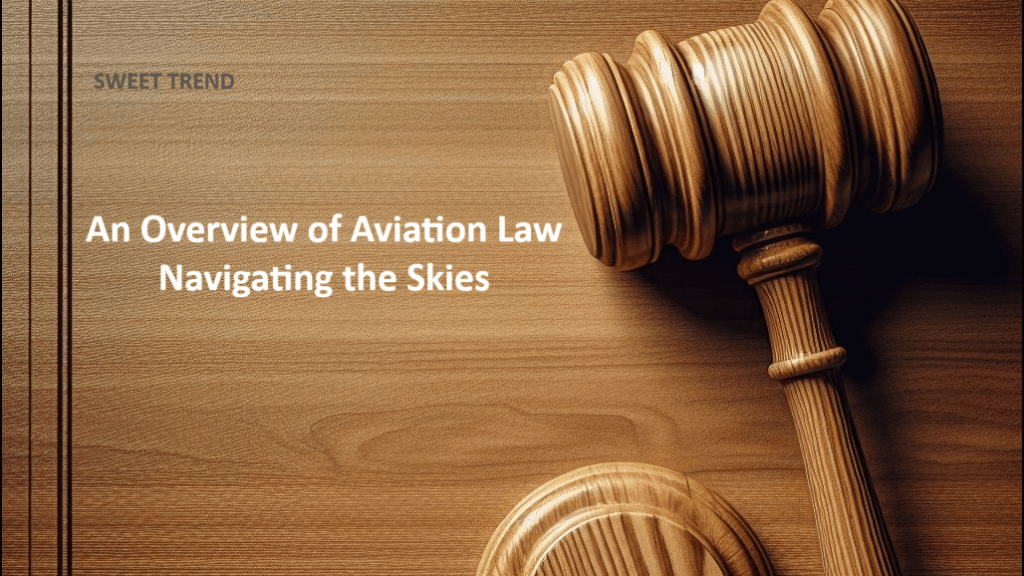
Aviation law is a complex and fascinating field that continues to evolve as technology and industry practices advance. One of the key aspects of aviation law is ensuring safety and responsibility within the aerospace community. This involves strict regulations and standards concerning aircraft maintenance, pilot training, air traffic control, and airport operations. Additionally, the legal framework surrounding international air travel presents unique challenges related to sovereignty, jurisdiction, and liability across borders.
Moreover, with the growing use of drones in commercial and recreational settings, aviation law faces new frontiers in regulating unmanned aerial vehicles in public airspace. These developments demand consideration of privacy concerns, security risks, and potential conflicts with traditional aviation operations. As such, it is imperative for legal professionals specializing in aviation law to closely monitor technological advancements while adapting existing regulations to ensure comprehensive oversight of this expanding industry.
In conclusion, aviation law serves as a crucial safeguard for both public safety and industry advancement within the dynamic realm of aerospace activities. The ongoing interplay between legal frameworks and cutting-edge technologies underscores the need for continued vigilance and adaptability in shaping the future of our global skies from a legal standpoint.
Aviation Law: Navigating the Skies and Regulations
Aviation law is at the intersection of two worlds – the high-flying world of aviation and the complex, ever-evolving world of legal regulation. With the continued expansion of commercial air travel, the need for clear, consistent laws governing this industry has never been more crucial. From safety and security regulations to liability and insurance requirements, aviation law serves as a vital shield protecting both passengers and stakeholders in the aviation sector.
One fascinating aspect often overlooked is how international treaties shape aviation law. With numerous countries involved in international air travel, agreements like the Montreal Convention play a pivotal role in establishing uniform standards for passenger rights and airline liabilities across borders. Additionally, as technology continues to revolutionize air transport, legal frameworks are constantly adapting to address emerging issues such as drone regulation and space tourism. In this rapidly changing landscape, understanding these intricate laws is not just essential for legal professionals but also for anyone with an interest in air travel.
1. History of Aviation Regulations
The history of aviation regulations can be traced back to the early 20th century when aircraft were first taking flight. As the technology advanced, it became clear that rules and regulations needed to be put in place to ensure the safety of passengers and crew. One of the earliest milestones in aviation law was the signing of the Convention for the Regulation of Aerial Navigation in 1919, which laid down basic principles for international air navigation.
Over time, as air travel became more widespread, governments around the world began enacting their own aviation laws to govern issues such as airworthiness standards, pilot licensing, and airport operations. The tragic events such as World War II and subsequent accidents led to further developments in aviation regulations, highlighting the need for comprehensive safety standards and oversight. Today, global organizations like the International Civil Aviation Organization (ICAO) work to harmonize aviation laws across different countries, ensuring a consistent level of safety and security in international air travel.
2. International Air Law Standards
The International Air Law Standards have long been a cornerstone of global aviation regulation, providing a framework for safe and efficient international air travel. However, as the industry continues to evolve rapidly, it is crucial for these standards to adapt accordingly. With the rise of Unmanned Aerial Vehicles (UAVs) and innovative aviation technologies, there is a growing need to revisit and potentially revise existing international air law standards to address these new developments.
One area of particular concern is the regulation of drone operations within national airspace and their interaction with traditional manned aircraft. As drones become more prevalent in both commercial and recreational use, ensuring they adhere to international air law standards will be essential for maintaining safety and order in our skies. Additionally, the increasing demand for space travel raises questions about how existing air law standards apply to activities beyond Earth’s atmosphere.
Overall, as global aviation continues to push boundaries and embrace new technologies, it is essential for international air law standards to remain adaptable and forward-thinking. By proactively addressing emerging challenges such as UAV regulations and space travel governance, these standards can continue to foster a safe environment for all aspects of international air travel.
3. National Aviation Regulatory Agencies
National aviation regulatory agencies play a crucial role in ensuring the safety and security of air travel. These agencies enforce aviation laws and regulations, oversee aircraft certification processes, and monitor airline operations to uphold industry standards. However, their significance extends beyond safety measures; they also contribute to aviation’s economic development by creating a stable regulatory environment that promotes innovation and growth.
Additionally, these agencies are tasked with addressing emerging challenges such as unmanned aircraft systems (UAS), commonly known as drones. As the use of UAS continues to expand across various industries, national aviation regulatory agencies are at the forefront of developing guidelines for their safe integration into airspace. This reflects their adaptability in responding to technological advancements while upholding the principles of aviation law.
In essence, national aviation regulatory agencies not only serve as guardians of safety but also play a pivotal role in shaping the future of air travel. Their multifaceted responsibilities underscore their essential contribution to maintaining a thriving and secure global aviation industry.
4. Aircraft Safety and Liability Laws
Aircraft safety and liability laws play a crucial role in ensuring the well-being of passengers and crew members. These regulations are designed to hold airlines accountable for maintaining high safety standards, while also providing recourse for individuals impacted by accidents or incidents. From requirements for regular maintenance and inspections to guidelines for crew training and emergency preparedness, aviation law sets strict standards aimed at minimizing risks associated with air travel.
Moreover, these laws address liability issues related to aircraft accidents or injuries sustained during flights. They establish procedures for determining fault and allocating financial responsibility, thereby offering protections for both passengers and airlines. By balancing the interests of all parties involved in air travel, aviation law seeks to foster a safe and secure environment while maintaining accountability among industry stakeholders. Understanding these complex legal frameworks is essential not only for airline operators but also for travelers seeking assurance of their rights and protections when taking to the skies.
5. Environmental Regulations in Aviation
Environmental regulations in aviation play a crucial role in ensuring sustainable practices within the industry. Airlines and aircraft operators are increasingly under pressure to reduce their carbon footprint and adopt eco-friendly technologies. One such regulation is the implementation of emission trading schemes, where airlines can buy and sell permits to emit greenhouse gases. This has spurred innovation in fuel-efficient technology and alternative fuels, pushing the aviation industry towards more environmentally friendly operations.
Furthermore, noise pollution from aircraft has also been a focal point of environmental regulations. Airports are required to adhere to stringent noise restrictions which aim to minimize the impact on local communities. These regulations have prompted advancements in quieter engine designs and operational procedures that mitigate noise pollution during takeoff and landing. As we move forward, it’s clear that environmental regulations will continue to shape the future of aviation, driving towards a more sustainable and eco-conscious industry for generations to come.
6. Drone Regulations and Emerging Technologies
Drone technology has rapidly evolved in recent years, raising concerns about safety and privacy as their popularity grows. Aviation law plays a crucial role in regulating this emerging technology to ensure safe and responsible usage. However, as regulations continue to adapt, there is a need for balance between enabling innovation and ensuring public safety.
The integration of emerging technologies, such as artificial intelligence and geofencing, presents new opportunities to enhance the regulation of drones. These advancements can enable real-time monitoring of drone activity and implementation of virtual boundaries to prevent unauthorized access to sensitive areas. By leveraging these technologies, regulators can proactively manage potential risks associated with drone operations while allowing for continued innovation.
As the drone industry continues to expand, it is essential for aviation laws to evolve alongside technological advancements. Embracing emerging technologies within regulatory frameworks can pave the way for safer skies while unlocking the full potential of drones in various industries. By striking a harmonious balance between innovation and regulation, we can harness the transformative power of drones while upholding safety and compliance standards.
Conclusion: The Future of Aviation Law
In conclusion, the future of aviation law is poised for significant changes and advancements. As technology continues to evolve, new regulatory challenges will emerge, from the integration of unmanned aircraft systems in commercial airspace to addressing privacy concerns related to advanced surveillance technologies. Additionally, the rise of supersonic and hypersonic travel will necessitate a reevaluation of existing air transport regulations.
Furthermore, with climate change concerns mounting, there will be growing pressure on the aviation industry to reduce its carbon footprint. This may lead to the development of new environmental regulations and incentives for sustainable aviation practices. In light of these challenges and opportunities, collaboration between international regulatory bodies and stakeholders within the aviation industry will be crucial in shaping a legal framework that supports innovation while ensuring safety and sustainability.



